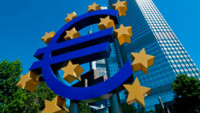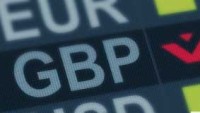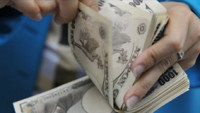 The latest Bank of Japan rate decision didn’t provide much in the way of surprises in Asia markets as Japanese policymakers left monetary policy unchanged, however they did raise their growth forecasts for the Japanese economy, but tempered this optimism in its statement of risks which included developments in the US, problems in China, as well as any deterioration from events in Europe.
The latest Bank of Japan rate decision didn’t provide much in the way of surprises in Asia markets as Japanese policymakers left monetary policy unchanged, however they did raise their growth forecasts for the Japanese economy, but tempered this optimism in its statement of risks which included developments in the US, problems in China, as well as any deterioration from events in Europe.
For all the early optimism of mid-January, US investors are now starting to develop a sense of realism about the type of President Donald Trump is likely to be after the worst day for US stock markets this year, saw the Dow drop back below the 20k level.
While it may be too early to call an end to the Trump trade quite yet, despite yesterday’s sharp declines, the fact remains that investors the world over have now been put on notice that there is another side to this particular trade, and for clues as to what might happen next they would be well advised to look back at some of his campaign pledges, in order that they avoid further potholes.
The weekend measures to tighten control over the US’s borders may well not be popular but no one can say we weren’t warned, as Donald Trump becomes that rare breed of politician who actually does what he says he will do.
That in turn raises some other unwelcome issues, notably what steps the new US President may take with respect to future trade policy with China, and the rest of the world, as well as his attitude towards the US Federal Reserve, which is already well documented.
The latter of these two is the most relevant right now given the start of the first two day meeting of the FOMC in 2017. While Fed officials have expressed confidence that we could well see three rate rises this year, the current investment back drop is likely to make any decision regarding the next rate rise fraught with difficulty, and means it is highly unlikely we will see a move on rates this quarter.
Lost somewhat in the fog of yesterday’s events was the preliminary German CPI numbers for January, which came in at 1.9%, up from 1.5% in December. While this was slightly below expectations it still marks a significant increase in pricing pressures in the last two months, with energy costs, which rose 5.8% making up a good part of that. It wasn’t just energy prices though as food prices also rose, by 3.2%, which given the current lack of wage growth is likely to act as a squeeze on incomes.
This rise looks set to translate into a similar jump in the latest preliminary EU CPI numbers as well, which in turn will raise the temperature on ECB President Mario Draghi’s current easing policy which is already causing rising disquiet in Germany already, as inflation starts to spark back to life.
Today’s EU CPI number is expected to come in at 1.5%, up from 1.1% in December, and 0.6% in November. That would equate to a 0.9% jump in two months, and while energy prices may well make a good part of that, the effects of a jump of this magnitude are rarely transitory. The ECB may well argue that core prices are likely to remain stable at 0.9%, however that will be scant comfort to households who have to eat and drink, as well as heat their homes.
The latest Spain CPI is expected to show an even bigger rise of 2.4%, from 1.6%, a rise that is slightly more tolerable given that the Spanish economy is growing at 3.2%.
No such outperformance from the EU which is expected to show Q4 growth of 0.4%, and 1.7% year on year, and an unemployment rate of 9.8% for December.
In the UK after a solid 2016 we’re expecting to see early signs of a reining back in borrowing with a slight slowdown in consumer credit for December to £1.7bn from £1.9bn.
Overnight Gfk consumer confidence for January came in at -5, a slight improvement on December’s -7, which suggests that despite the outlook for rising prices the UK consumer still remains fairly optimistic.
EURUSD – slipped back to the 1.0620 level yesterday without any real conviction. Appears to be range trading for now with strong resistance at the 1.0770/80 area and broader support back at the 1.0580 area.
GBPUSD – has slipped back below the 1.2520 level raising the prospect of a move towards the 50 day MA and the 1.2420 area. A move below 1.2400 would argue for a return to the 1.2250 area. And delay a return to the high at 1.2675.
EURGBP – last week’s failure to take out the 0.8450 support area appears to have prompted a pull back, which could well extend towards the 0.8650 area, by way of interim resistance at the 0.8580 area. For the current down move to continue we need to push below the 0.8450 area to target a move towards 0.8300.
USDJPY – having failed to push through the 115.80 area last week, we’ve drifted back lower again. While below here the risk remains for a move back towards the previous lows at 112.50. Interim resistance on pullbacks comes in at the 114.30 area.













